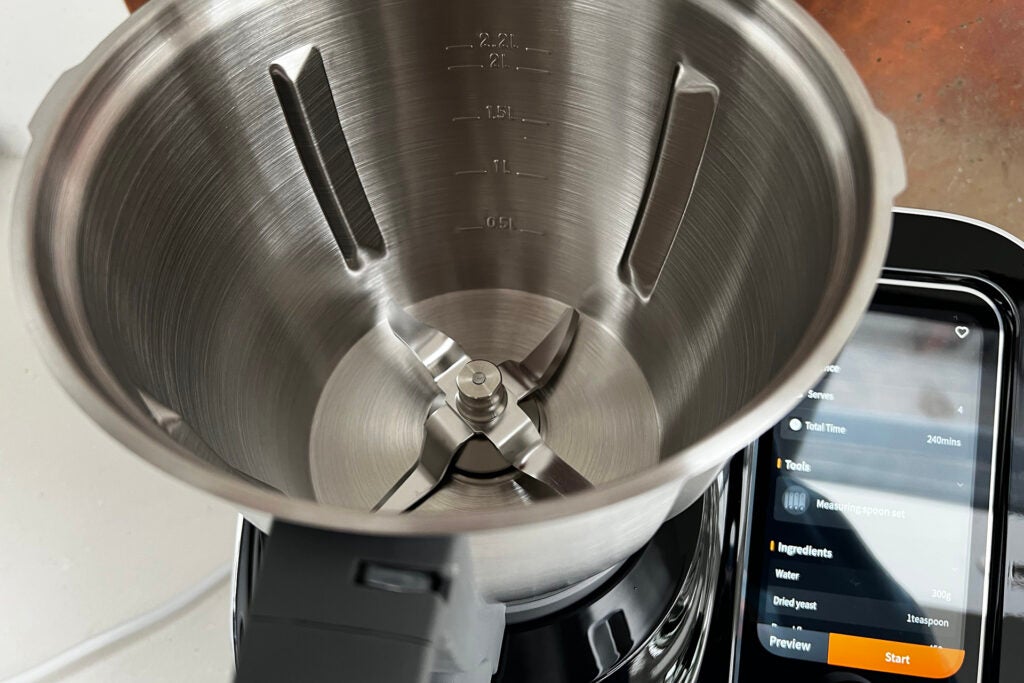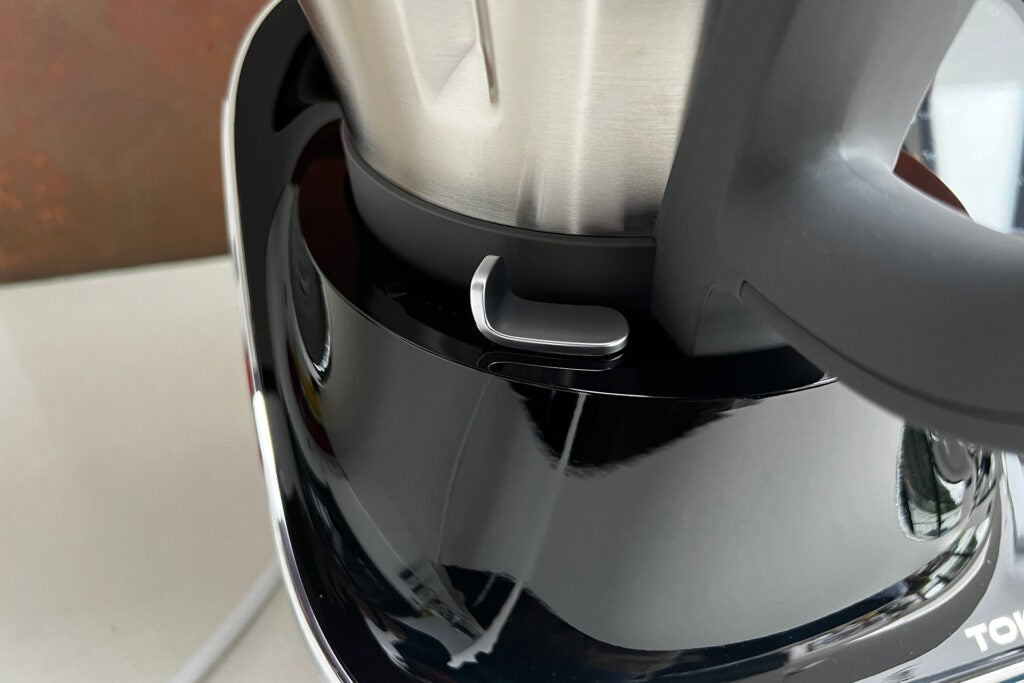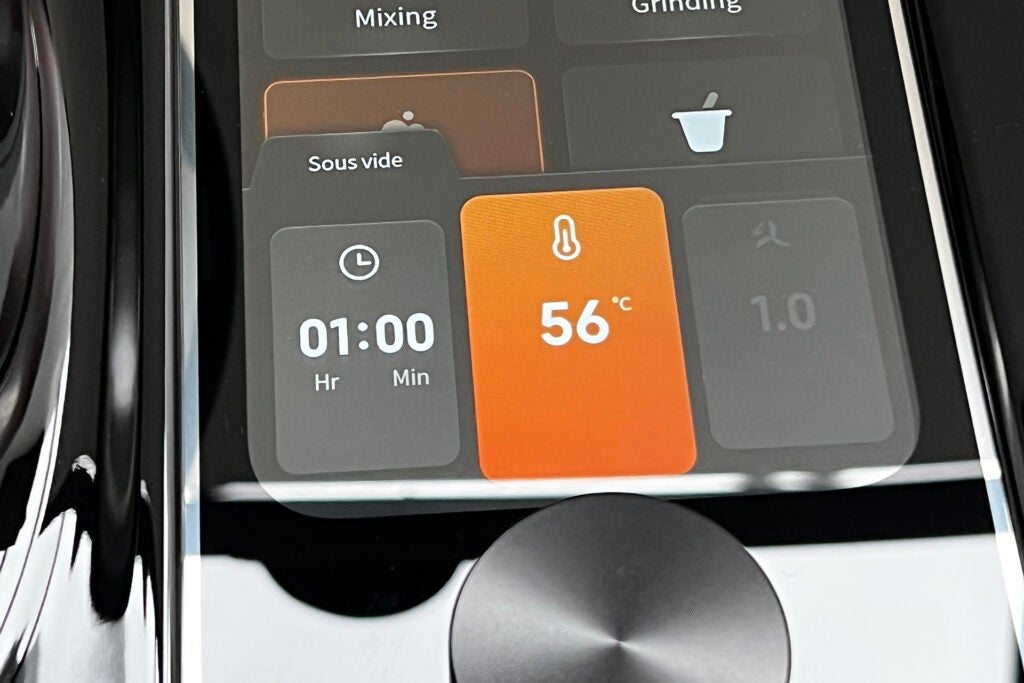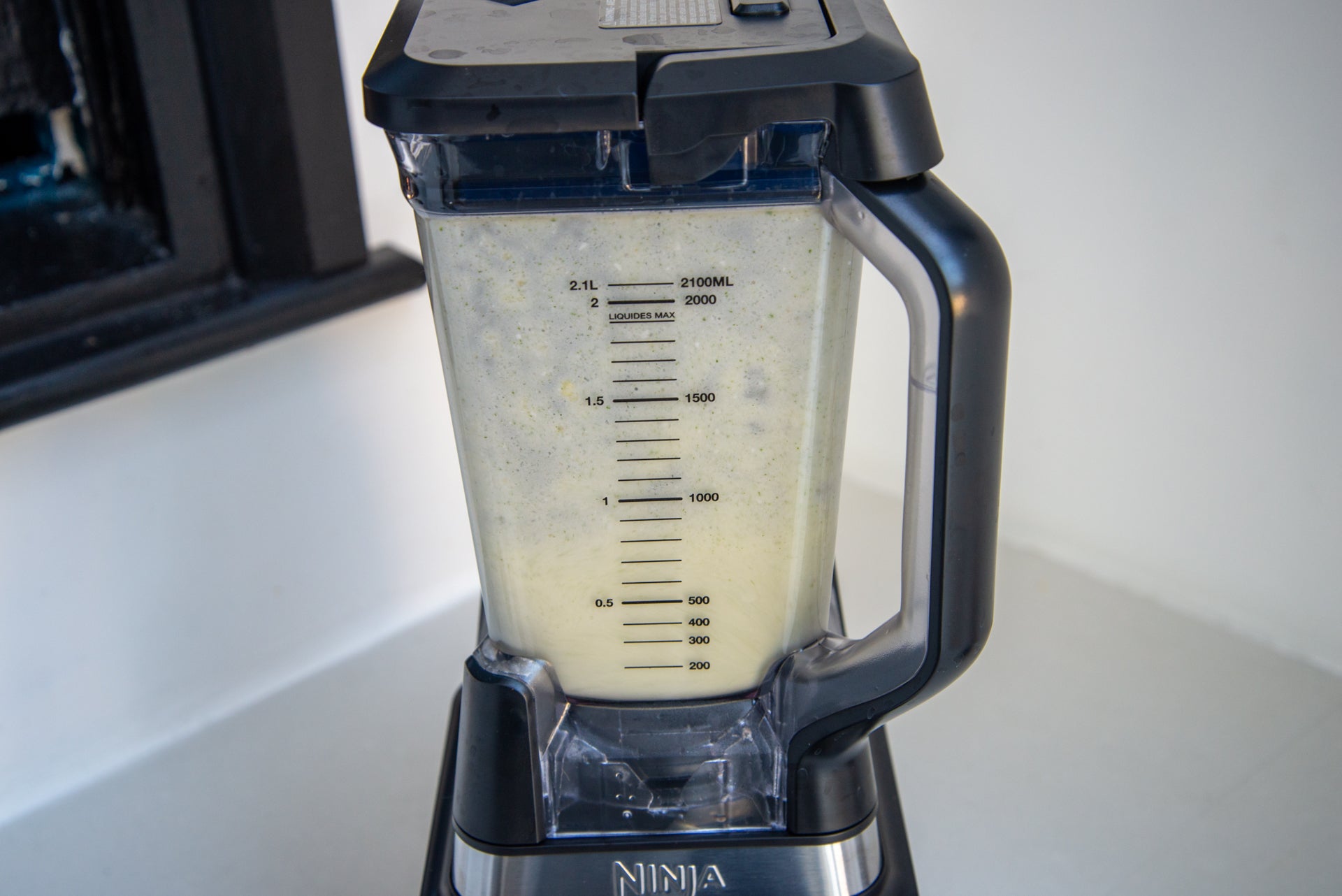TOKIT Omni Cook Review
Cheaper than a Thermomix with similar features


Verdict
Comparisons with the Thermomix TM6 are inevitable, but the TOKIT Omni Cook holds up surprisingly well. Sure, the Omni Cook’s interface isn’t quite as neat as its rival’s and there are fewer recipes to choose from, but otherwise, there’s a lot to like: all of the recipes are free, the cooker is powerful and relatively easy to use and it’s a lot cheaper, too.
Pros
- Excellent value
- Huge range of cooking options
- Free cloud recipes
Cons
- Interface a little confusing at times
- No offline mode
Availability
- UKRRP: £699
Key Features
- TypeThis is part blender, part mixer, part smart cooker and one of the only kitchen gadgets you’ll ever need.
- RecipesWith an internet connection, you can get hundreds of free recipes, presented step-by-step on the touchscreen.
- Cooking modesYou can blend, cook, sous vide, ferment, knead, chop, grind, mince and more.
Introduction
The Thermomix TM6 has largely had its own way for years: this all-in-one cooking tool can cook, blend, whisk, steam and more, making it the ultimate kitchen gadget. It’s expensive, which may make the similar TOKIT Omni Cook an attractive option.
As with the Thermomix, the Omni Cook looks like a blender, and it’s capable of multiple cooking, chopping and blending tasks, with either manual control of step-by-step recipes displayed on its large touchscreen. It largely does a brilliant job of cooking, although a few rougher edges make the Thermomix the slightly better choice if you’re willing to spend the money.
Design and Features
- Comes with the main items to get you started
- A few optional extras on the website
- No fees for recipes
The TOKIT Omni Cook is designed in a similar way to the Thermomix. Here, the base is a little larger, as the screen is placed to the side of the bowl in portrait mode, as opposed to the landscape display in the Thermomix. At 364 x 244 x 355mm and weighing 7.4kg with the bowl in place, the TOKIT Omni Cook is quite a beast of a machine. Yet, take into account that this can replace several other kitchen gadgets and it’s actually quite a good size.
Everything you do in the TOKIT Omni Cook takes place in the 2.2-litre stainless steel bowl, which houses the blades at the bottom.

This locks into the base when dropped into place and has to be unlocked using the switch on the side. That’s a little different to the Thermomix TM6, which simply lifts in and out.

TOKIT provides a lid in the box, which has to be twisted to lock into place. Again, the Thermomix makes things a little easier as you just drop the lid on, and then two motorised arms clamp it into place.

For washing, the blades can be removed from the bottom of the bowl, and everything can do in the dishwasher, although you may want to use the machine’s pre-clean function to remove mess before hand. This heats water (I recommend putting a drop of washing up liquid in) and mixes it to clean off food debris.

TOKIT also provides a spatula, simmering basket, whisk and measuring spoons in the box. The spatula’s useful, but I prefer the one that comes with the Thermomix, as it has a guard that lets you drop it through the hole in the top of the lid, so you can manually stir for some recipes.

While the Thermomix TM6 ships with the Varoma steaming basket, TOKIT has its equivalent as an optional extra (£49.99). You can also buy an additional bowl set (£129), slow-cook plug (£35) and blade cover (£25). The latter makes a lot of sense for slow cooking as it prevents food from getting crushed and broken up by the spinning blades.
There are two ways to use the TOKIT Omni Cook: you can use the manual cooking modes or you can use the guided recipes. With the manual modes, you can blend, mix, slow cook, steam, sous vide, weigh, rice, ferment, mince, grind and juice. And, you can whisk, stir, make yoghurt and milk, shred, saute and use the Omni Cook as a kettle.
For each mode, you tap the option, then set the cooking time and, if required, temperature. Bizarrely, there’s no option for the manual mode, where you have full control over the machine. It took me ages to find out where it is: deselect the programmed mode that you’re on to get the manual mode back.

I find the Thermomix TM6 a little easier to use manually, as it doesn’t just show you the options that you’ve selected, but shows the current temperature alongside the set temperature. That way, you can see when the TM6 has reached the temperature that you want.
Omni Cook does have one advantage: you can set the temperature to 180C, whereas the TM6 tops out at 120C in manual mode. Thermomix offers a saute mode at higher temperatures, although this is only available in some recipes and isn’t a selectable option.
The alternative for cooking with the TOKIT Omni Cook is to use cloud recipes once you’ve hooked the machine up to Wi-Fi. Unlike Thermomix and its Cookidoo recipe service, TOKIT doesn’t charge for cloud recipes and they’re free to use.
There’s a good selection of common dishes, but Thermomix has more recipes. Plus, Thermomix lets you save recipes for offline use, whereas the Omni Cook requires an internet connection. TOKIT’s guided recipes work well. At each stage, it tells you what ingredients you need and any manual actions you need to take, such as rolling out bread after it has risen, complete with handy pictures. Some recipes even have videos, although these often have annoying music to go with them.
For steps that need an Omni Cook function, the machine is set automatically and you only have to hit the dial to get started.

Largely, I found the experience with the Omni Cook’s guided recipes to be similar to the Thermomix ones, but there’s a minor annoyance. With the Thermomix, I can interrupt a recipe to perform a different action. When making bread, I often run the cleaning cycle while I’m waiting for the dough to rise; I then go back to the recipe for the final steps and oven cooking instructions. With the TOKIT Omni Cook you can’t leave the recipe without cancelling it.
Performance
- Very powerful
- Good results from guided recipes
Able to move its blades between 40 and 12,000rpm, the TOKIT Omni Cook can move between delicate mixing and stirring up to a more powerful blender action. It can pretty much handle anything.
Using the ice shaving programme, I turned ice cubes into fine snow, although I did have to repeat the job a few times as my larger ice cubes hadn’t been fully chopped after the initial run.

Chopping onions to make Thai green curry, I found quartered onions were chopped finely. I had to scrape down the bowl at the end, but there were no large chunks left behind.

Slightly less successful is the whisk. There’s less room in this bowl than in a traditional stand mixer, such as the Kenwood KMix, and the TOKIT’s whisk isn’t as big as a balloon whisk. Whipping egg whites gives some texture, but I prefer the result from a stand mixer. To be fair, this is one of the weaker sides of the Thermomix TM6.
Next, I used the guided recipes to make baguettes. The recipe combines bread flour, yeast and water to make a fairly sticky dough. This needs leaving to rise, before knocking back, going through a second proof, shaping and, then finally scoring. The final bread dough is then cooked at 240C in an oven, with hot water added to a baking tray to add steam.

Crispy on the outside and soft on the inside, the results from the TOKIT Omni Cook are as good as the results from the Thermomix TM6.

One of the best cooking modes available is sous vide (under vacuum). With this mode, you fill the bowl with water and then set the desired cooking temperature. Food is then added to the bowl in waterproof, sealed bags and left until it’s just the right temperature. If necessary, you can search at the end.
Sous vide is well suited to cooking steaks. I measured the water temperature when set to 56C (medium rare), and it was absolutely spot on. Adding a steak to the water and leaving it for a couple of hours, I finished it off with a quick sear. The result was a steak perfectly cooked: pink right to the edges; when you cook steak in a pan, you end up with the middle pink, but this slowly fades to a darker colour and isn’t as evenly cooked.

Out of the box, sous vide is best used inside the simmering basket, because of the moving blades. Buy the blade cover and you can use the entire bowl for cooking.
Latest deals
Should you buy it?
If you want a single kitchen device that can do almost everything, this is an impressive and powerful bit of kit.
If you want more guided recipes or a slightly cleaner and more intuitive interface, the Thermomix TM6 remains king.
Final Thoughts
The TOKIT Omni Cook is an impressive bit of kit. At £699 (or £758 if you buy the optional steamer), this multi-cooker is a lot cheaper than the Thermomix TM6 (£1149). In terms of features and performance, the Omni Cook delivers very similar results to its better-known competition, plus there are no ongoing fees for cloud recipes.
That said, the Thermomix has more recipes available, can work offline and it is also slightly easier to use with a nicer interface, plus the bowl and lid lock automatically. I’d say that this is enough to give Thermomix the edge as the ultimate kitchen gadget, but if you’re on a tighter budget and want a machine that can do pretty much anything, the TOKIT Omni Cook is a great lower-cost alternative.
How we test
Unlike other sites, we test every multi cooker we review thoroughly over an extended period of time. We use standard tests to compare features properly. We’ll always tell you what we find. We never, ever, accept money to review a product.
Find out more about how we test in our ethics policy.
Used as our main multi cooker for the duration of the review
We crush ice, chop onions and use multiple cooking modes to see what each machine is capable of.
We follow guided recipes to see what each multi cooker can do and how easy it is to use.
FAQs
Both machines are similar and are capable of producing similar results, but the Onmni Cook is cheaper and has free recipes; the TM6 is slightly easier to use and has a wider selection of recipes.
You can buy a blade cover, slow cooker plug and steamer.



